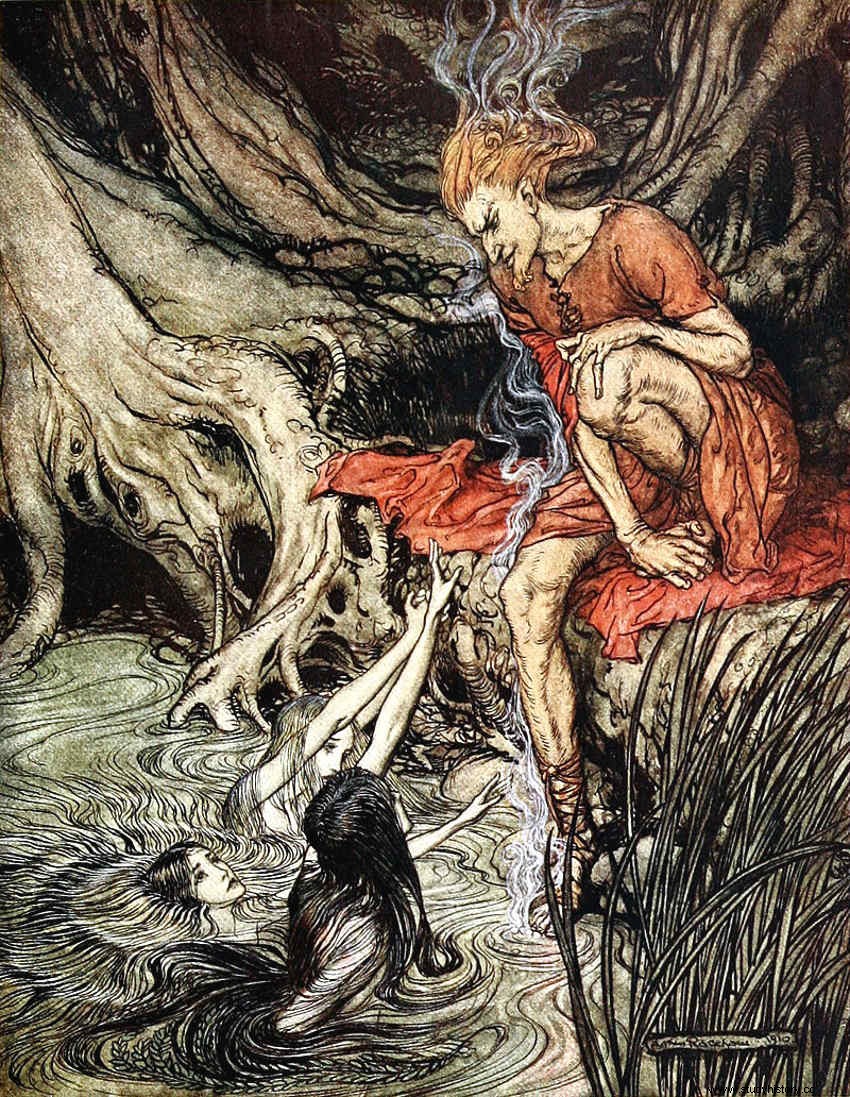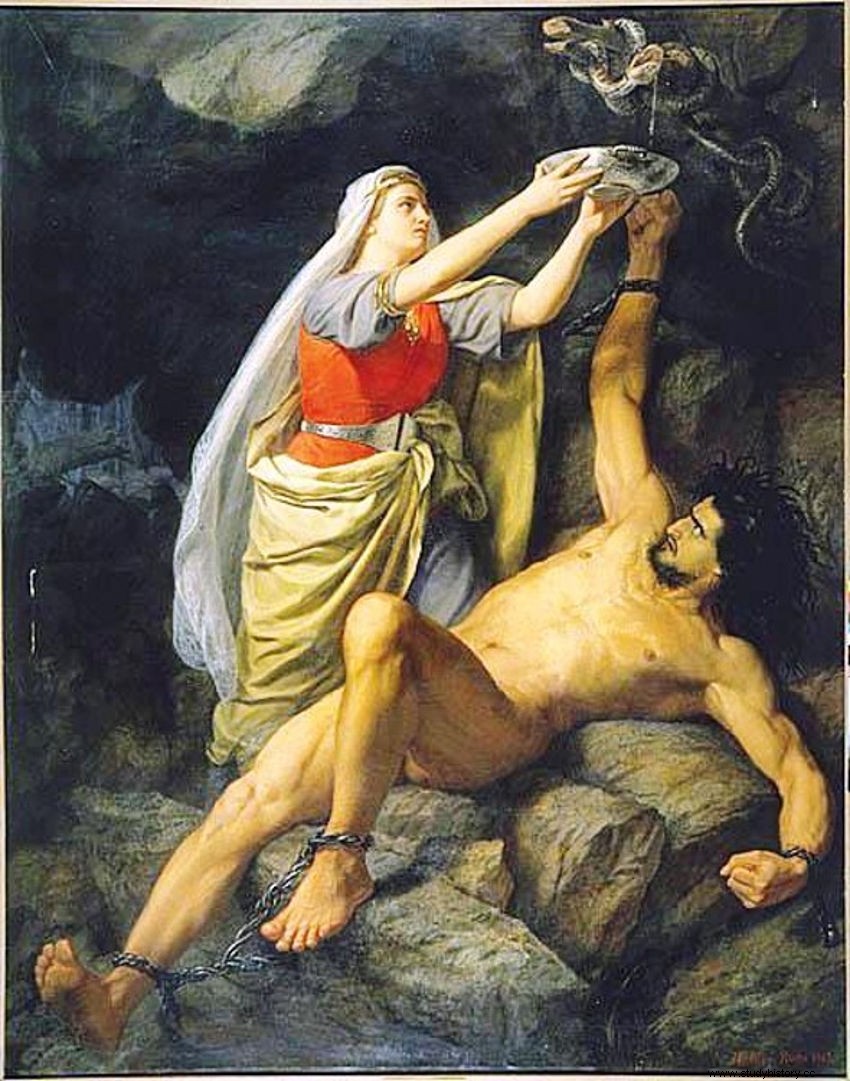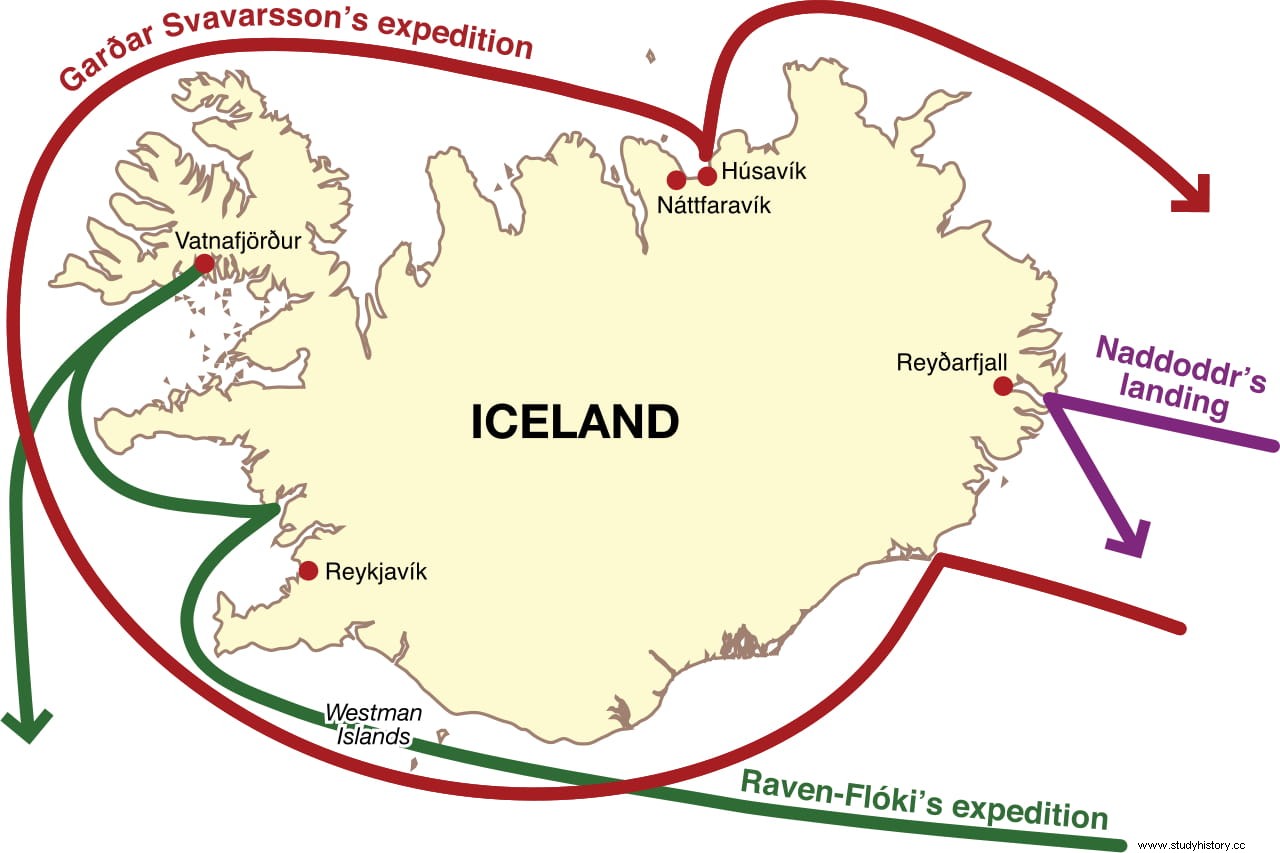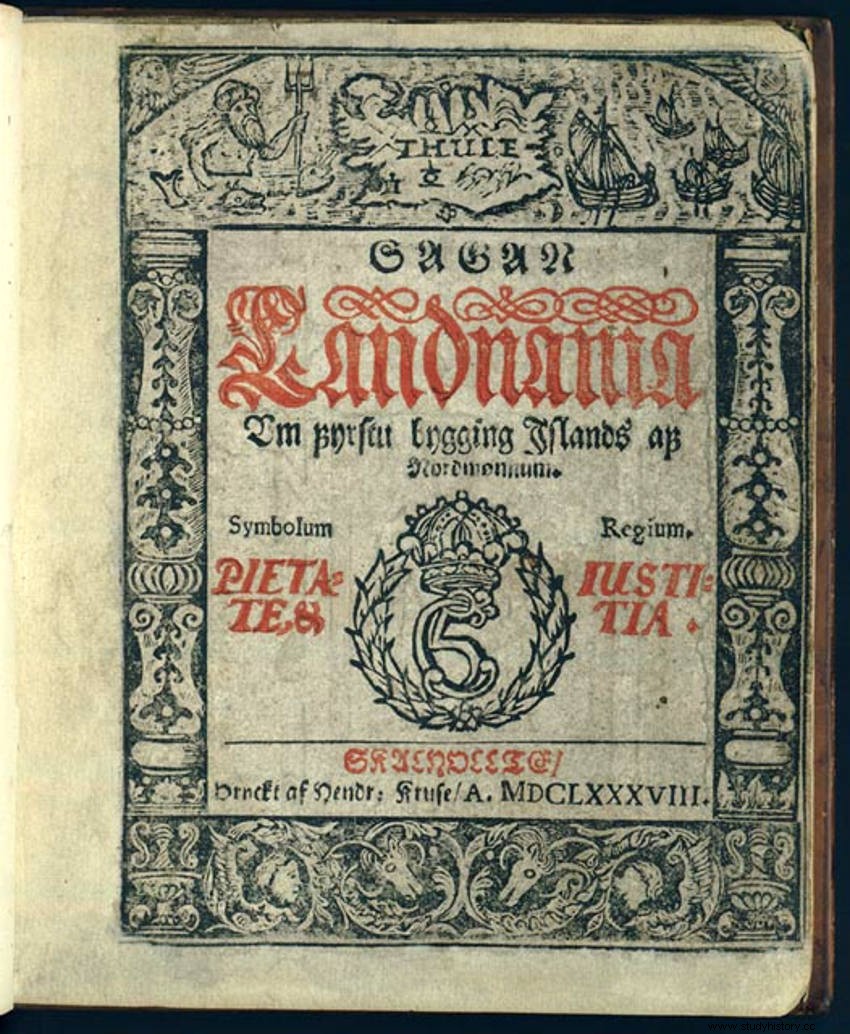One of the most unique characters from the hit TV series Vikings is Floki, played by the Swedish actor Gustaf Skarsgård (son of the famous Stellan Skarsgård, who has become very popular with films like Mamma mia or The Avengers ).
Floki, a faithful friend of Ragnar Lodbrok for whom he builds the special ship with which his expedition manages to reach England, has an eccentric personality that, combined with his firm devotion to the traditional gods, makes his presence the most peculiar moments of the Serie. The question is did this character exist?
And the answer, which would also be applicable to other colleagues of his, is neither yes nor no, quite the opposite. The creators of the series have once explained that the inspiration was the god Loki and, apparently, the actor himself started from that idea, an incarnate divinity, to face the role of him.

Indeed, Loki had a series of characteristics that are recognizable in Floki, beyond the similarity in the name (whose etymology, by the way, is unknown):funny, mocking, extravagant, tricky... He used to change his physical form to do his tricks. pranks and fooled his own superhuman companions.
Norse mythology embodied in the Eddas (some compilations of Icelandic legends in prose, part of which was composed by the famous skald Snorri Sturluson) tells that Loki was the son of Farbati and his wife Laufrey, two giants , and had two brothers named Helblindi and Býleistr.
However, no trace of his cult has been found, so many authors consider that his nature was not exactly divine, at least to the same level as that of Odin (who nevertheless considered him a brother), Thor or Freya, for example. A minor god , then, that he married Angrboda, who gave him three children (Fenrir, Jörmundgander and Hela), although he later had two more (Narfi and Váli) with his second wife, Sigyn.

Loki fell from grace by killing Balder , offspring of Odin, resentful because because of a mortuary nightmare of his, his children had been locked up to prevent anyone from harming him. Then he fled from the fury of the gods and this part of his story is interesting because it is reflected in the series, humanized, with Floki as the protagonist:after trying to assassinate Ragnar for his condescension towards Christianity, Floki escaped to the mountains and dodges his pursuers several times, hiding under the water of a river (parallel to the myth, in which he turns into a salmon).
He was finally caught and punished tying him between two rocks; In mythology, the intestines of his children are used as ligatures, since revenge reached his entire lineage in one way or another. Later, Loki would get free and go to Ragnarök , the battle of the end of the world, a kind of Armageddon.
From all this it can be deduced that the Floki of television is fictitious. Now, the truth is that there was a historical figure named Floki Vilgerdsson (Hrafna-Flóki Vilgerðarsson in the Icelandic version) who lived in the 9th century and achieved some notoriety for being the first Norseman to reachIceland deliberately.
There is a theory that suggests that the island had already been trodden on before, in the 8th century (or even earlier), it seems that by Christian monks from the north of Great Britain, but since they left when the Vikings arrived and did not There has been an archaeological record of their passage, we must go to the year 874 AD. to find the first stable colony, led by Ingólfur Arnarson .
I underline stable because there were previous colonies, such as Gardar Svavarsson , who settled there temporarily shortly after Naddoddr , a Viking from the Faroe Islands, discovered that piece of land in the middle of the ocean in 860, baptizing it with the name of Snæland (Land of Snow). The nuance is that Nanoddr arrived by chance while Floki Vilgerdsson traveled there on purpose.
His journey is told by the Landnámabók (Book of the Settlement or Establishment), an Icelandic manuscript from the 12th century that is essential to know that original part of the history of the island. Floki was the son of Vilgerd Karadatter and therefore the grandson of Horda-Kåre Aslaksson, chieftain of the Norwegian kingdom of Hordaland , but he was considered a vikingr mikill , that is, a misfit, as reflected in the series, in which he lives apart and remains radically faithful to the traditional faith.

Looking for a place to settle on his own, he heard of new lands to the west which they called Garðarshólmi , so he embarked with his wife Gró and his daughters Oddleifur and Þjóðgerður, sailing from Rogaland. After a stopover in the Shetland Islands, where one of the girls accidentally drowned, he arrived in the Faroe Islands. There he married his other daughter and got three ravens that they were to help him find Garðarshólmi.
Sure enough, put back on track and in Noah's way, one of the birds returned to the Faroes and another flew briefly to perch on the ship again but the third flew out of sight to the northwest and didn't return , thus pointing the way forward.

Therefore, Floki earned the nickname Hrafna , which means Raven. It is not clear what year he went but at last he sighted land, a bay he named Faxaflói and that it is in front of the current capital, Reykjavík. Floki did not travel only with his family but with those of other companions such as Herjolf, Faxe and, above all, Þórólfur Þorsteinsson (grandson of Grímur Kamban, the first settler of the Faroes), whom he later became known as Smjör (Butter) alluding to a phrase with which he described the discovered land. They built a village in Vatnsfjörður (currently a nature reserve near Barðaströnd) and explored the island.
As his arrival coincided with a splendid summer, when the extremely harsh winter rigor arrived. they were well prepared to deal with it. However, spring was slow in coming and in the meantime they took the opportunity to explore the territory.
Count the Landnámabók that in that period of time Floki climbed to the top of the highest mountain he found, which experts believe could be the Nonfell (a 473 meter hill situated in the Westfjords), and from there he surveyed the entire area, including the great Ísafjörður Fjord , which at that time still retained its glacial morphology and was full of moving ice. Apparently it was the sight of Ísafjörður that prompted Floki to rename the island Ísland (that is, Iceland, Land of Ice).
Despite everything, the Scandinavians were not very happy with the harsh climate of Iceland or with the little use they made of the land, so they ended up gathering their things and returning to Hordaland . His descriptions were not very positive, but the fact is that Floki once again showed off his restless ass and again threw himself into the sea to return to his island, from which he not only did not move anymore but ended his days exercising by goði , a kind of priest with extra political powers.
